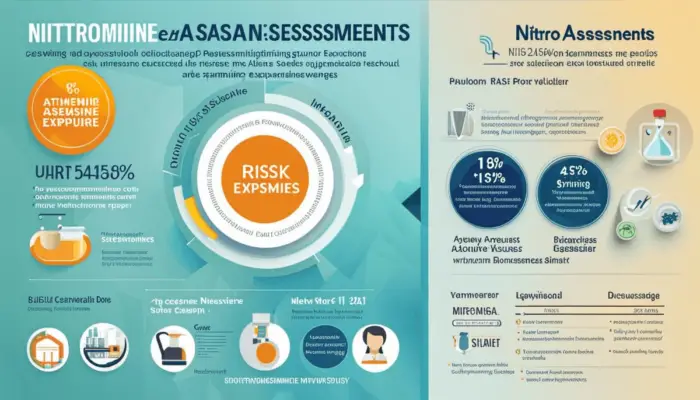The complexity of the criminal justice system necessitates intricate and reliable tools for assessing recidivism risk, among which the Ohio Risk Assessment System (ORAS) distinguishes itself.
ORAS, a system designed to focus on rehabilitation and the effective management of offenders within the Ohio justice system, is an evidence-based tool that employs structured evaluations to gauge offender risk levels.
To gain a comprehensive grasp of ORAS, it is imperative to delve into its structural composition and functionality.
This understanding lays the groundwork for its effective utilization across all correctional phases, be it pretrial, community supervision, prison intake, or reentry.
Moreover, by exploring the nuances of ORAS score interpretation by various stakeholders, we illuminate the interconnected aspects of the criminal justice system, revealing how crucial decisions about incarceration, probation, and parole rely heavily on these systematic evaluations.
Basic Understanding of the Ohio Risk Assessment System(ORAS)
What is the Ohio Risk Assessment System (ORAS)?
The Ohio Risk Assessment System (ORAS) is a comprehensive assessment tool developed by the University of Cincinnati Corrections Institute (UCCI) for the Department of Rehabilitation and Corrections in Ohio.
Justice professionals use the tool to determine the level of supervision required for offenders in community and institutional settings.
It uses statistical methods to predict an offender’s likelihood of recidivism or reoffending, with its key objective being to improve supervision and intervention decisions.
The Purpose of ORAS
The primary purpose of ORAS is to enhance decision-making processes in the Ohio justice system, specifically in cases involving offenders.
This tool is centered on evidence-based practices, with careful data collection and research findings influencing each decision.
Using ORAS, professionals can anticipate the likelihood of recidivism in an individual and customize the level of supervision, rehabilitation, and intervention.
This approach promotes accountability and optimizes the use of resources in the justice system.
Development of the Ohio Risk Assessment System
The development of ORAS took around two years and involved several steps. The first step involved analyzing existing research and developing a comprehensive list of risk factors associated with criminal behavior.
Next, UCCI researchers used this list to create a series of structured assessments at different points in the criminal justice process – pretrial, community supervision, prison intake, and community reentry.
They then collected data from over 1,800 individuals across eight Ohio counties, using interviews, official records, and other documentation. This data was used to develop preliminary assessment tools, piloted and revised to create the final ORAS tools.
Comprehending the ORAS Impact on Offender Risk Assessment
When harnessed correctly in a practical setting, the Ohio Risk Assessment System (ORAS) offers a detailed framework for gauging various risk factors contributing to recidivism.
Each risk factor is assigned a certain weight, reflected in the points given as per the scoring guide of the tool, making tangible its potential to propagate repeat offenses.
As the scores mount higher, they signify an amplified risk of reoffending, necessitating a heightened level of vigilance and greater intensity of interventions.
ORAS evaluates a broad scope of risk factors, such as an offender’s past criminal offenses, their education and employment conditions, the stability of their family and socio-relational support systems, and indications of substance misuse.
In tandem, it also considers protective factors, like active participation in society and the influence of prosocial associates, which could potentially decrease the propensity for recidivism.
ORAS has revolutionized commonplace approaches to anticipating potential risks by improving clarity and objectivity.
This has fortuitously positioned it as a pivotal asset in reinforcing the success of Ohio’s justice system by ensuring the optimal allocation of resources and effective execution of interventions.

Components and Scoring of ORAS
In-Depth Exploration of the Ohio Risk Assessment System
The Ohio Risk Assessment System (ORAS) represents a set of thoroughly designed tools crafted to forecast the risk and needs of individuals encompassed within the criminal justice spectrum. ORAS is a brainchild of the University of Cincinnati.
Its implementation commenced in 2009, birthed by a strategic alliance between the Ohio Department of Rehabilitation and Correction and the Ohio Office of Criminal Justice Services.
This system’s primary objective is to enhance decision-making efficacy, regularly track the fluctuation of risk and needs, and astutely pinpoint the requirements for programming and supervision.
ORAS Scoring Basics
The main objective of the ORAS is to identify risk levels in individuals within the criminal justice system. Low, moderate, and high risk levels are determined based on a point scale.
Points are assigned to static factors (those that do not change, like age at the first arrest or the number of previous incarcerations) and dynamic factors (those that can change, such as substance abuse, peers’ criminal activities, or antisocial personality patterns).
The total score results in risk categories that help guide the level of intervention, supervision, treatment, and case management an individual needs.
Four Stages of ORAS: Pretrial, Community Supervision, Prison Intake, Reentry
The ORAS system includes tools for multiple stages: pretrial, community supervision, prison intake, and reentry. These stages reflect various points in the criminal justice process, and each stage has its own risk assessment tool.
Pretrial Assessment Tool
The ORAS pretrial tool assesses risk during the pretrial stage, determining the likelihood of failing to appear in court or committing a new crime.
It includes stable dynamic factors such as a history of failure to appear and criminal history.
Community Supervision Tool
The community supervision tool assesses the risk of individuals on probation or parole. It considers additional dynamic risk factors, such as having criminal peers, a lack of prosocial recreational activities, and issues with substance abuse.
Prison Intake Tool
The prison intake tool determines the programming needs of inmates during incarceration. It uses scores from the previous tools and reassesses them throughout imprisonment to track changes and adjusts programming accordingly.
Reentry Tool
Finally, the reentry tool assesses risks and needs upon release from prison to community supervision. It plays a major role in determining post-incarceration planning and supervision.
Overall Risk Score
The tools used in each stage of the criminal justice process contribute to the overall ORAS risk score. This cumulative score provides valuable information for developing appropriate rehabilitative plans and predicting relapse risk.
High scores indicate a greater risk of reoffending and, thus, a higher need for intervention and supervision.
The Ohio Risk Assessment System (ORAS) was developed to assess criminal risk levels in an efficient process. By taking advantage of its comprehensive scoring system, professionals can identify risk factors and develop targeted interventions to reduce the chance of relapse.
In doing so, ORAS plays a pivotal role in maintaining safety and societal security.

Application and Interpretation of ORAS Scores
Delving Deeper into the ORAS Scoring System
To fully understand ORAS, it’s important to grasp how it operates within the Ohio criminal justice system.
This risk-scoring guide is based on evidence-based practices, predicting an individual’s likelihood of reoffending.
Professionals conduct criminal history, education, employment, and substance abuse assessments when applying the scoring system. These key items contribute to the final assessment, categorizing a person’s risk level as low, moderate, high, or very high.
Application of ORAS Scores
ORAS scores play an instrumental role in the decision-making process of the Ohio criminal justice system, effectively guiding the likelihood of reoffending and informing responses to an offender’s behaviour.
For example, law enforcement officers use these scores to understand historically risky behaviours and plan their law enforcement strategies.
Probation officers use ORAS scores to tailor supervision strategies that cater to an individual’s specific risk level, such as increased monitoring for high-risk individuals or intervention strategies for those at a moderate risk level.
Court officers also use ORAS scores to help create suitable sentencing and treatment plans. This approach might involve alternative sentencing for low-risk offenders or a more intensive probation program for higher-risk individuals.
The courts can base their incarceration decisions on an offender’s risk level, bringing consistency and transparency to judgment processes.
Interpretation of ORAS Scores by Different Stakeholders
Different stakeholders within the Ohio criminal justice system interpret ORAS scores based on varying considerations.
A high ORAS score might indicate the need for intense surveillance and preventive measures for law enforcement officers.
In contrast, a low score could warrant fewer resources to monitor an offender. For parole officers, a high ORAS score might necessitate the creation of a detailed supervision plan to address the specific risk factors identified in the assessment.
In court systems, having information about a defendant’s risk of reoffending can influence sentencing decisions. For example, a high ORAS score may guide a judge to choose a sentence promoting intensive intervention and rehabilitation over options like short-term imprisonment.
The defendant’s ORAS score might also prompt a review of the probation or parole conditions, ensuring they are well-suited to the offender’s risk level.
Finally, ORAS scores also guide reentry planning for the offender into the community after serving their sentence.
Stakeholders in the community corrections and social services sectors may use these scores to arrange the necessary resources and support systems, assisting the offender’s reintegration into society and reducing the risk of recidivism.
The Ohio Risk Assessment System (ORAS) enhances the criminal justice system of Ohio by instilling consistency, predictability, and fairness.
Utilization and interpretation of the ORAS scores by variegated entities pave the way for offender management strategies.
The ultimate goal of these strategies is to curb the reoffending rate and augment public safety.

Strengths and Limitations of ORAS
Delving Deeper into the Ohio Risk Assessment System (ORAS)
Devised by the Ohio Department of Rehabilitation and Correction, the Ohio Risk Assessment System (ORAS) is a scoring guideline to determine the possibility of an offender’s recidivism and pinpoint any specific criminogenic needs.
As a tool rooted in research, it employs statistical methods to comprehensively portray an offender’s chances of re-incarceration.
Accuracy and Reliability of ORAS Scores
Historically, the ORAS has proven highly reliable and accurate in predicting an offender’s risk level, showcasing a discernible correlation between ORAS scores and recidivism rates.
Its methodology underscores different risk factors and needs for different offender populations, thus ensuring personalized and accurate risk assessments.
For instance, research supports that the ORAS exhibits solid predictive validity for both male and female offenders and across different racial groups.
Additionally, each module within the ORAS maintains meaningful coherence with various subscales, facilitating reliable examination of distinct aspects of an offender’s risk profile.
Strengths of the Ohio Risk Assessment System
One key strength of ORAS lies in its comprehensive approach. Unlike other scoring systems focusing only on static risk factors such as criminal history, the ORAS incorporates static and dynamic risk factors.
By including dynamic factors such as attitudes, peer influence, and substance misuse, the ORAS recognizes facets that could be altered via targeted intervention, opening potential avenues for behavior change and offender rehabilitation.
Another advantage of ORAS is its practicality and objectivity. By standardizing the risk assessment process, ORAS reduces the impact of subjective judgment and helps ensure consistency and fairness, thus contributing to the overall system’s trustworthiness.
Limitations of the Ohio Risk Assessment System
The Ohio Risk Assessment System (ORAS) is an influential tool created by the University of Cincinnati for measuring an offender’s risk of reoffending.
Despite its successes, it is important to note that ORAS does have some limitations. Chief among them is its heavy reliance on self-reported data, which can lead to inaccuracies if individuals intentionally or unintentionally provide misleading or incomplete information.
Further, while ORAS scores provide valuable insights into reoffending likelihood, they should not be solely relied upon in deciding sentencing, parole, and rehabilitation plans.
Other factors, such as the offender’s willingness to change, the support system available post-release, and the accessibility of viable employment opportunities, all warrant consideration.
The final noteworthy limit of ORAS is its unproven applicability beyond Ohio’s offender population.
Due to varying demographic distributions and crime rates across jurisdictions, the model’s effectiveness may not be as robust.
This lack of adaptable validity underscores the need for continued evaluation and customization when utilizing ORAS outside of Ohio.
Case_study: Real-Life Application of ORAS
A Closer Look at ORAS Scoring Guide: Practical Application
The Ohio Risk Assessment System (ORAS) scores risk factors to help determine offenders’ potential for recidivism. It utilizes interviews and relevant documentation to weigh risk and need factors across seven categories: criminal history, education, employment, family and social support, neighborhood problems, substance abuse, and antisocial personality pattern.
A specific example of ORAS in practical use can be seen in Franklin County, Ohio. Probation officers perform ORAS assessments of offenders, using the scoring guide to analyze different facets of the offender’s history, personal traits, and environment.
These evaluations then assist the court in determining appropriate interventions, which may range from probation and parole to incarceration.
Real-World Challenges in ORAS Application
In real-world applications, there can be challenges with the ORAS scoring guide. For instance, there may be difficulty in objectively evaluating certain factors like family support or neighbourhood problems.
There can also be room for variability between assessors. One probation officer may interpret a response differently from another, making it hard to ensure scoring consistency.
It can also pose challenges when certain compulsory data is unavailable. For instance, if an offender refuses to cooperate or some historical data is missing, this would invariably affect the ORAS score, potentially influencing the court’s decision.
Improving ORAS Scores: Real-World Interventions
Interventions tailored to the offender’s ORAS score can be implemented to mitigate recidivism risk. For example, in some Ohio jurisdictions, an offender scoring high within the ‘substance abuse’ category might be directed towards specialized drug counselling programs.
Similarly, someone with an ’employment’ risk might receive vocational training during probation.
However, a potential shortfall could be the lack of resources to support such interventions. Not all jurisdictions may have the budget or the infrastructure to offer an appropriate range of programs.
Influence on Judicial Decisions
The ORAS score also influences the judge’s sentencing decision. Higher ORAS scores often equate to more severe penalties. However, the system’s reliance on fixed categorical scoring can be a shortfall.
Contextual factors such as the momentary irrationality in an offence act, the influence of peer pressure, or a sudden personal crisis are not incorporated in the ORAS, which could otherwise impact determining the appropriate course of action.
ORAS and Post-Release Actions
Upon release, parole officers use an offender’s ORAS score to establish a post-release plan. This includes regular check-ins, participation in community programs, or even GPS tracking for high-risk individuals.
ORAS scores also help determine how often an offender should report and the level of supervision needed.
Despite its shortcomings, ORAS remains a valuable tool in the Ohio Judicial System. It provides a structured way to assess recidivism risk, assists in decision-making processes, and helps ensure resources are allocated where they are most needed.

Conclusion
By distilling the complexities of ORAS, we created a roadmap for professionals to navigate its multifaceted construction and utility within the criminal justice system.
Following the analysis of its components and scoring, we traversed its practical application and interpretation, uncovering the implications of ORAS scores in responsive decision-making.
The discussions of its strengths, limitations, and real-life application bear the system’s inherent strengths and potential areas for refinement.
They remind us of its dynamic nature, which strives for continual improvement. In its present form, ORAS’s capacity to improve decision-making processes within Ohio’s criminal justice system is evident.
Still, the exploration also accentuates the necessity for an ongoing evaluation and revision mechanism to retain its relevance and effectiveness.

Chris Ekai is a Risk Management expert with over 10 years of experience in the field. He has a Master’s(MSc) degree in Risk Management from University of Portsmouth and is a CPA and Finance professional. He currently works as a Content Manager at Risk Publishing, writing about Enterprise Risk Management, Business Continuity Management and Project Management.

